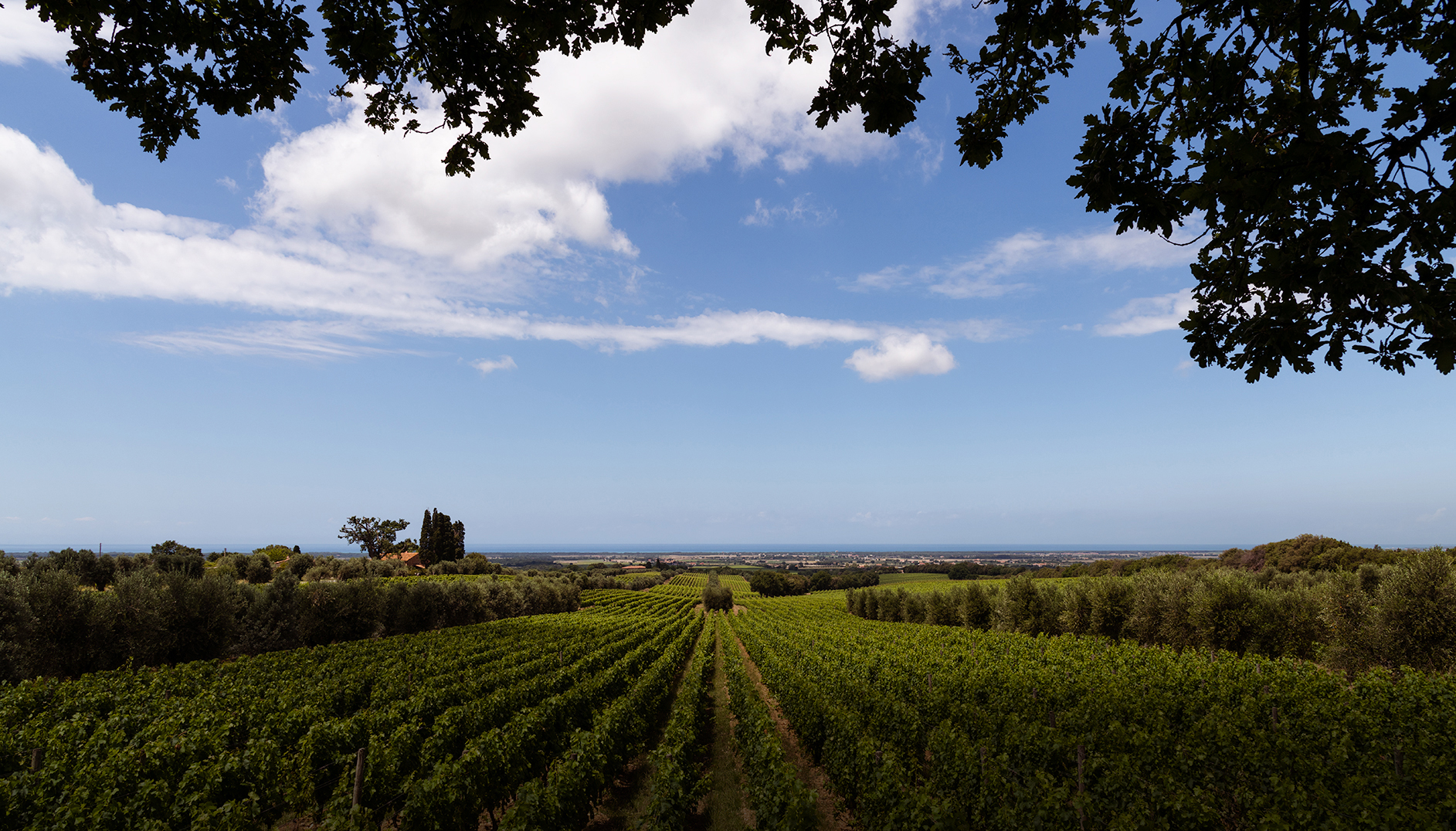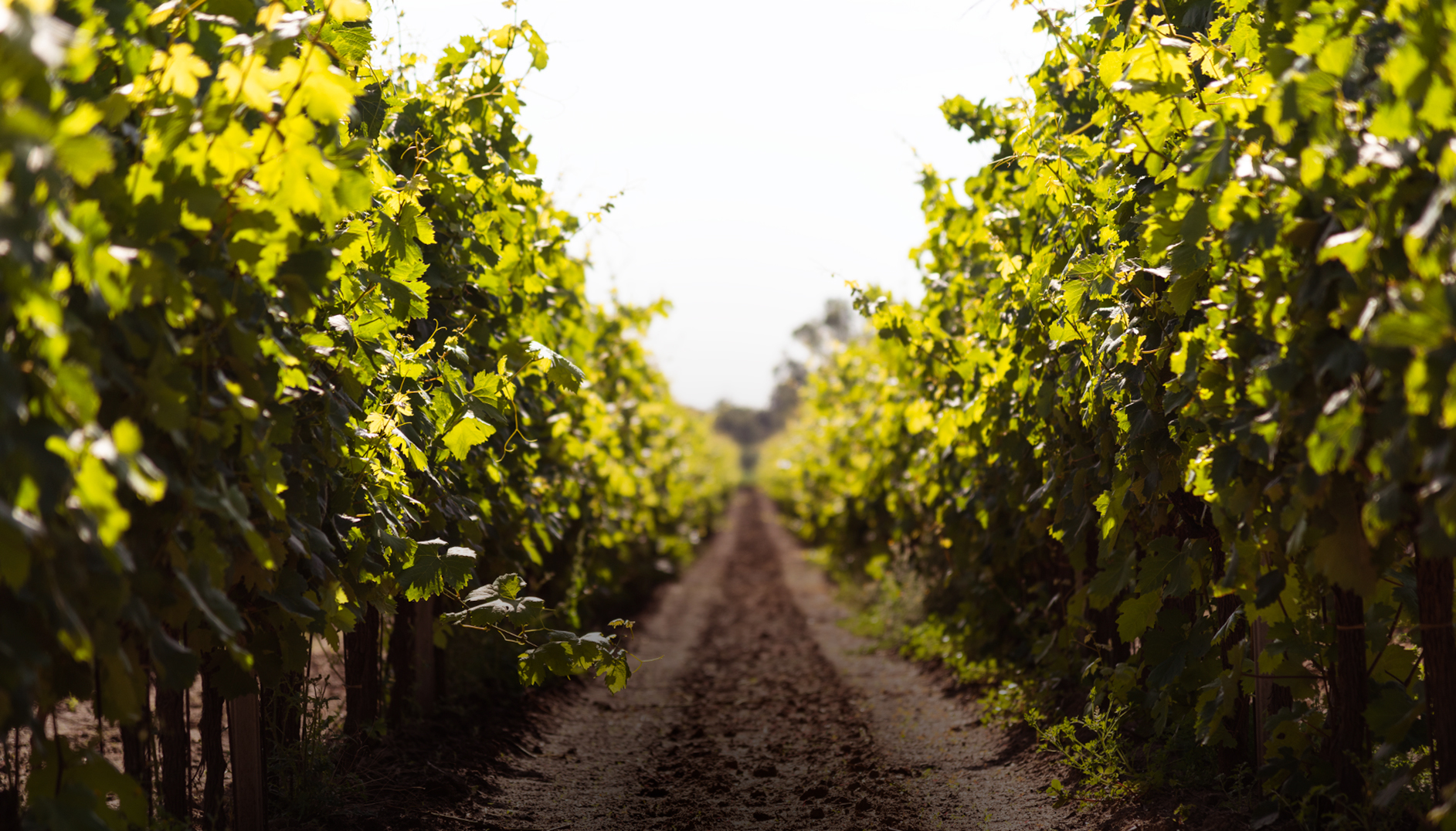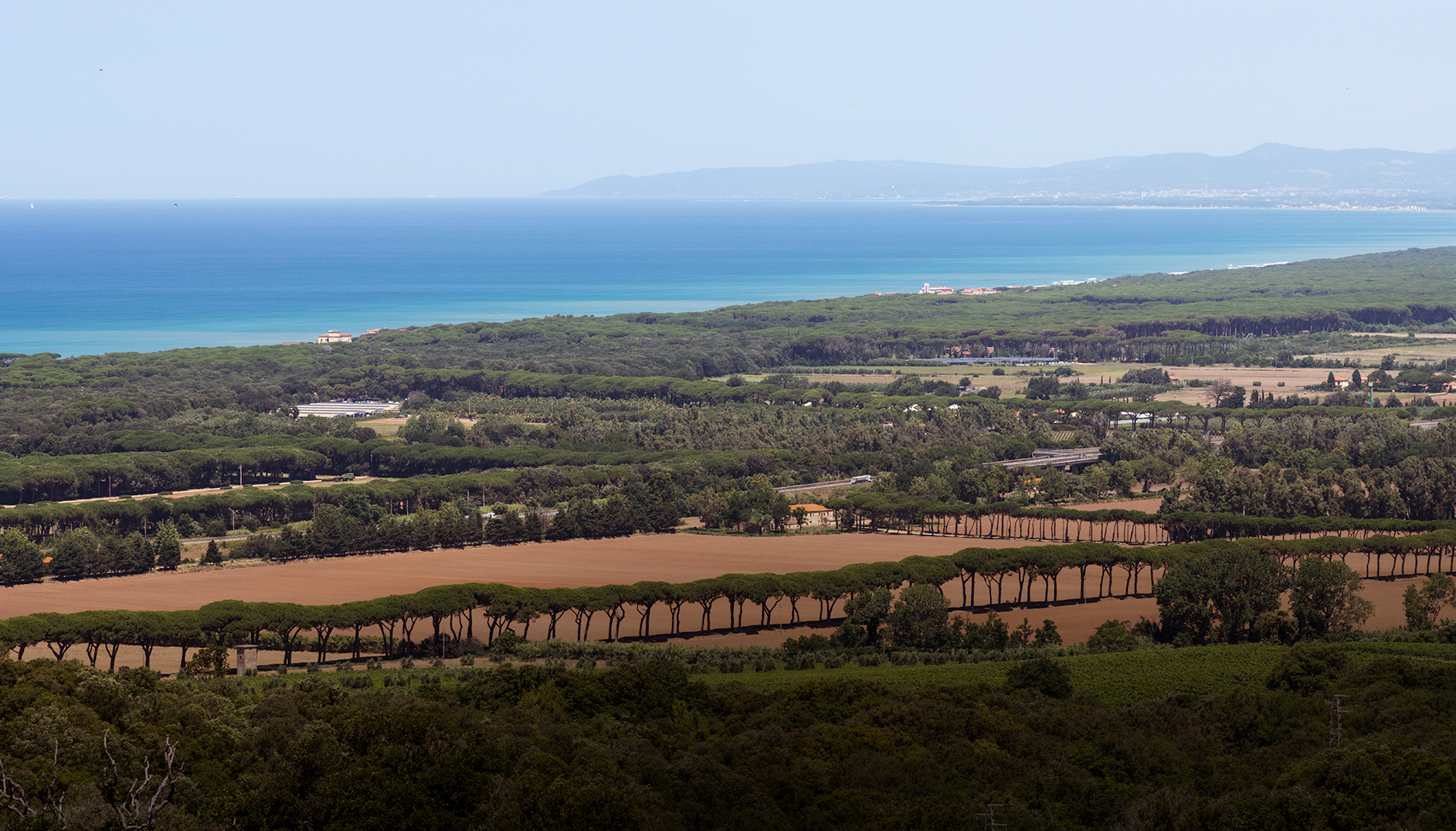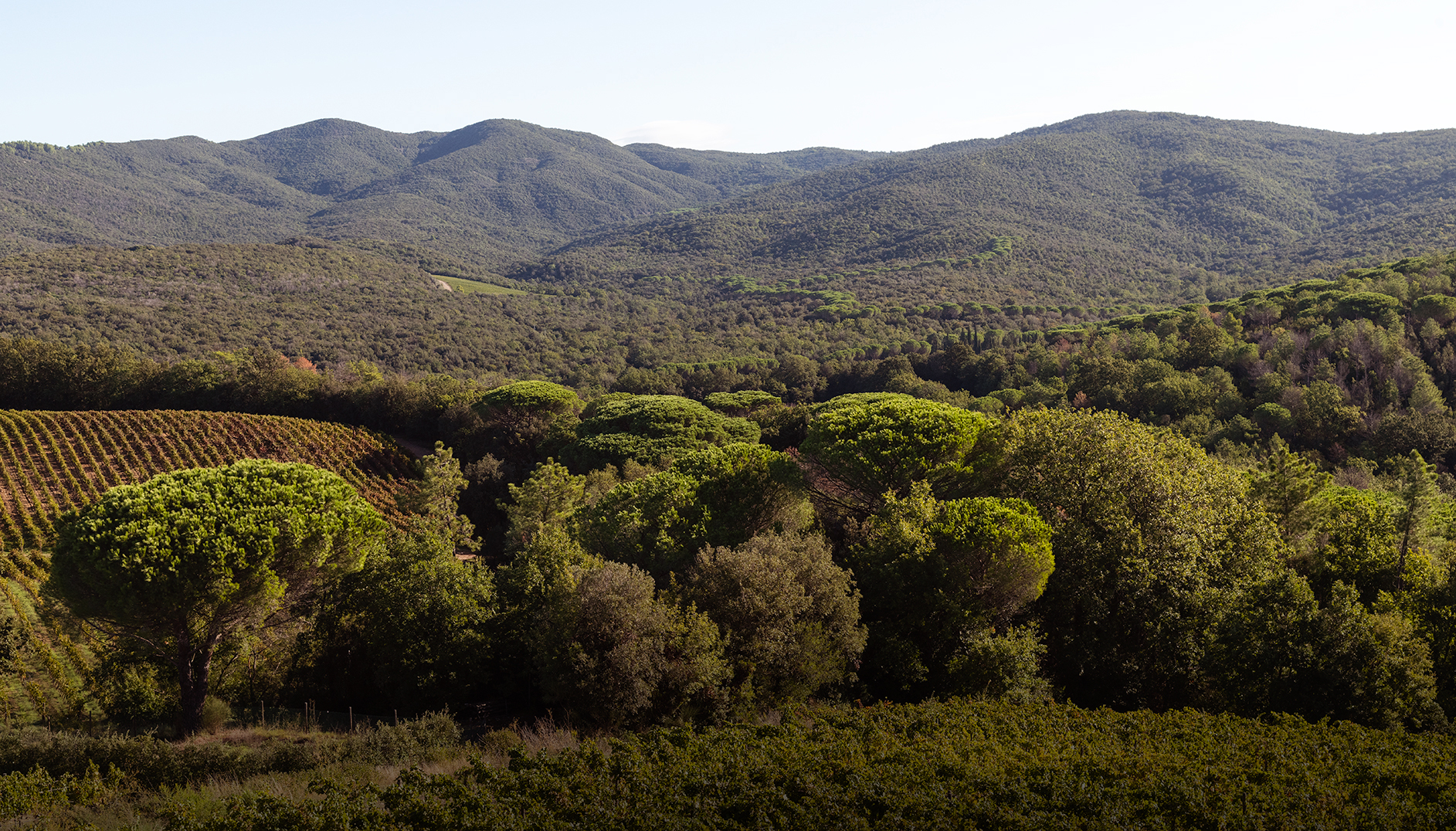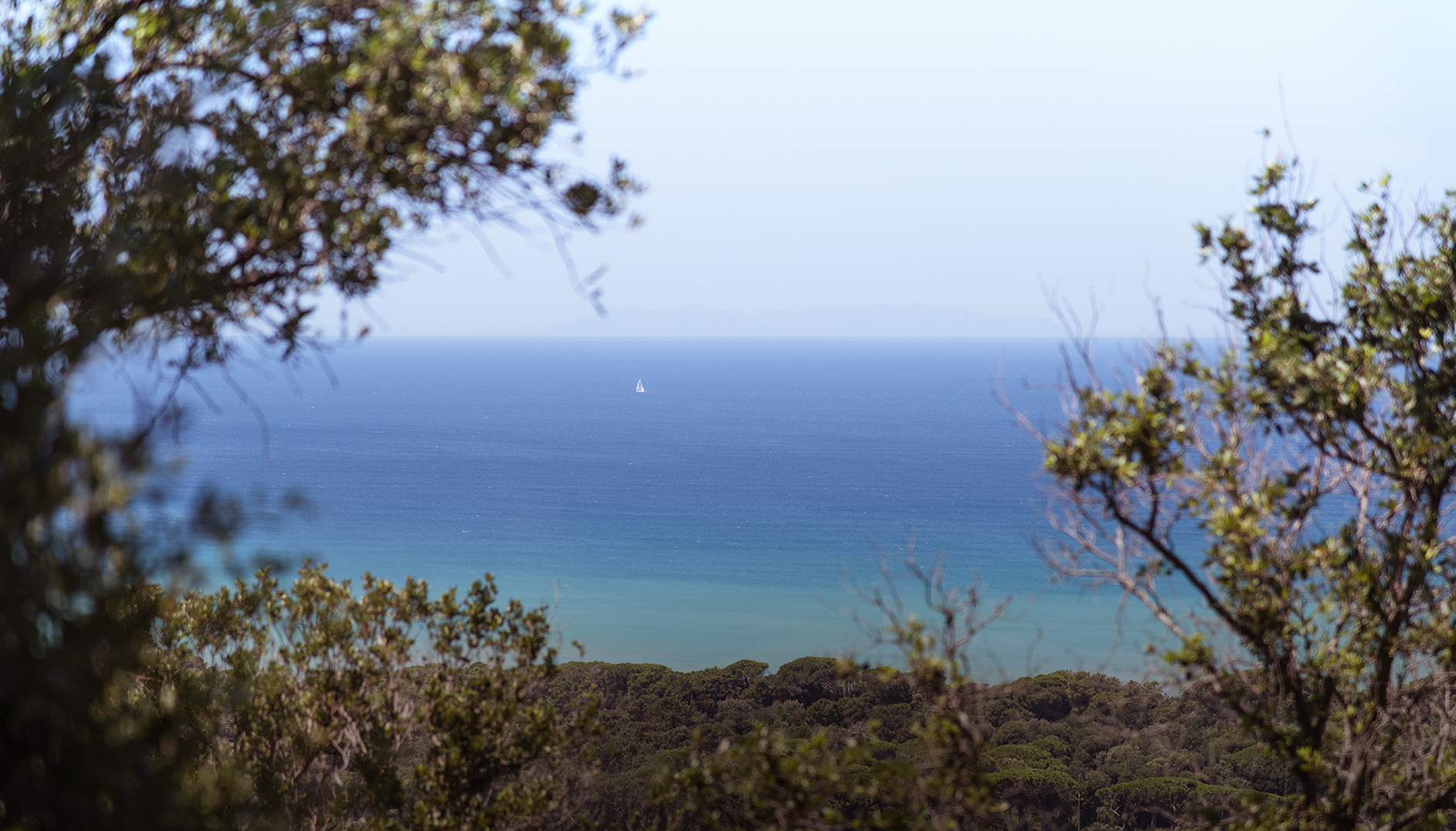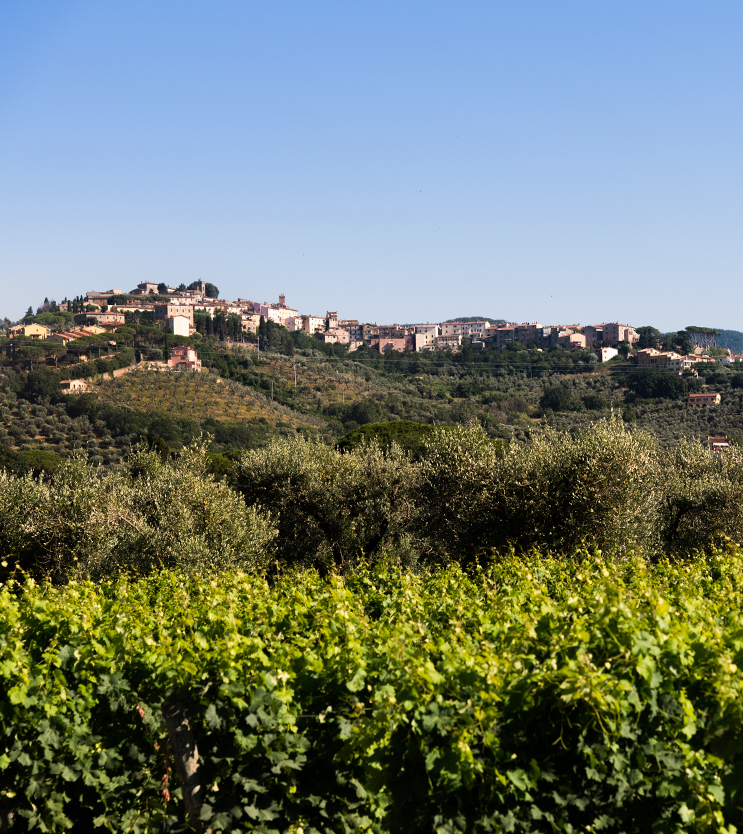
Geography
Production of Bolgheri DOC wines is permitted within the appellation’s territory that coincides with the political boundaries of the Municipality of Castagneto Carducci in the province of Livorno, with the exception of the stretch of coastline west of Via Aurelia.
The area is a natural theater with the Colline Metalifere (hills with a rich variety of metallic mineral resources) to the east that gradually slope downwards towards the coastline. Thick forests cover the surrounding hillsides maintaining and protecting the rich and complex ecosystem. The tiered hillsides slowly descend towards the central arena; an area of flat terrain where most of the vineyards grow. Bolgheri faces center stage: the Tyrrhenian sea dominated by the Tuscan archipelago with Corsica visible on the horizon.
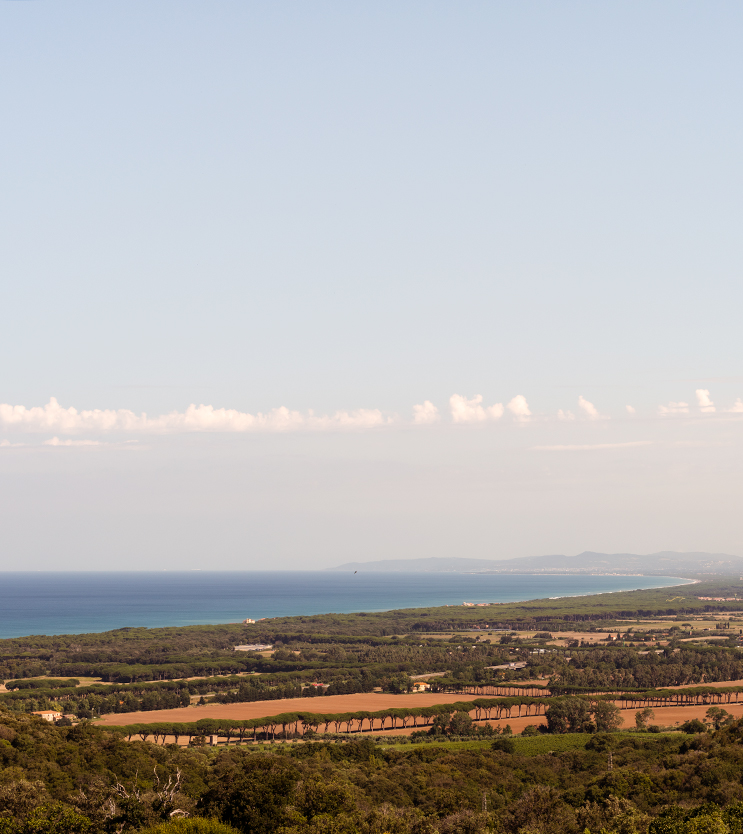
The area located west of Via Aurelia, the ancient consular road built by the Romans in the III century B.C., borders the coastline with long stretches of beaches and pine forests and is therefore not favorable land for growing vines.
The size of the area is limited, the distance from the furthest point north to south is 13 kilometers while its east-west extension is about 7 kilometers. These vineyards sit at an altitude that varies from 10 to 380 meters above sea level.
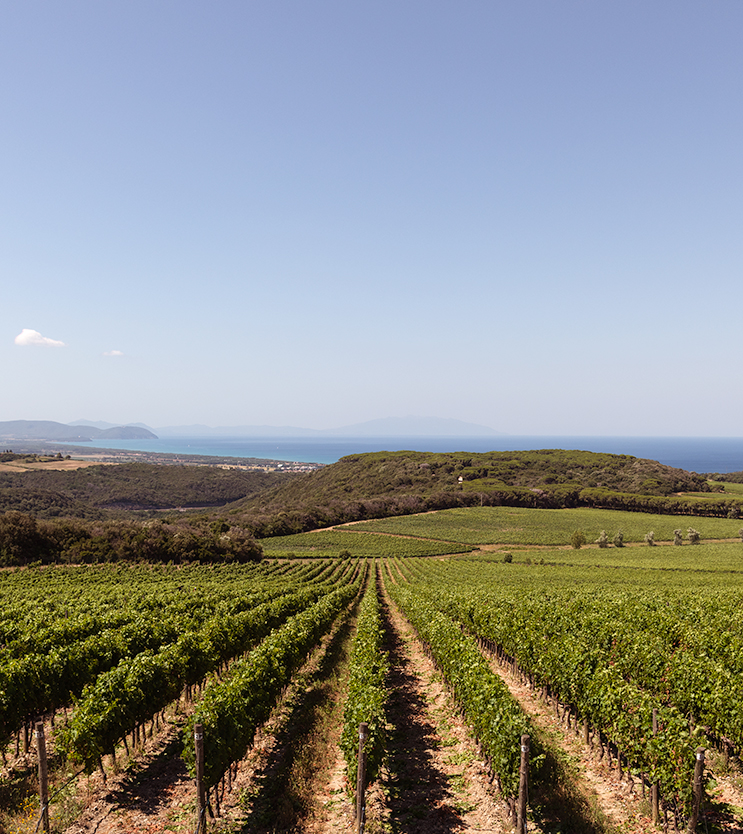
Climate
The position of Bolgheri’s theater creates its unique and characteristic microclimate defined by the surrounding hillsides.
Sea breezes, especially those channeled through the Tuscan archipelago, keep the area cool year-round providing an average yearly temperature of 15.5 C, about one degree lower than other costal zones. This phenomenon imparts greater freshness and elegance to the wines. Consistently windy weather, at least 250 days per year, has another beneficial effect on the vines’ health; breezes aerate the vineyards reducing the levels of humidity and limiting the threat of fungal diseases.
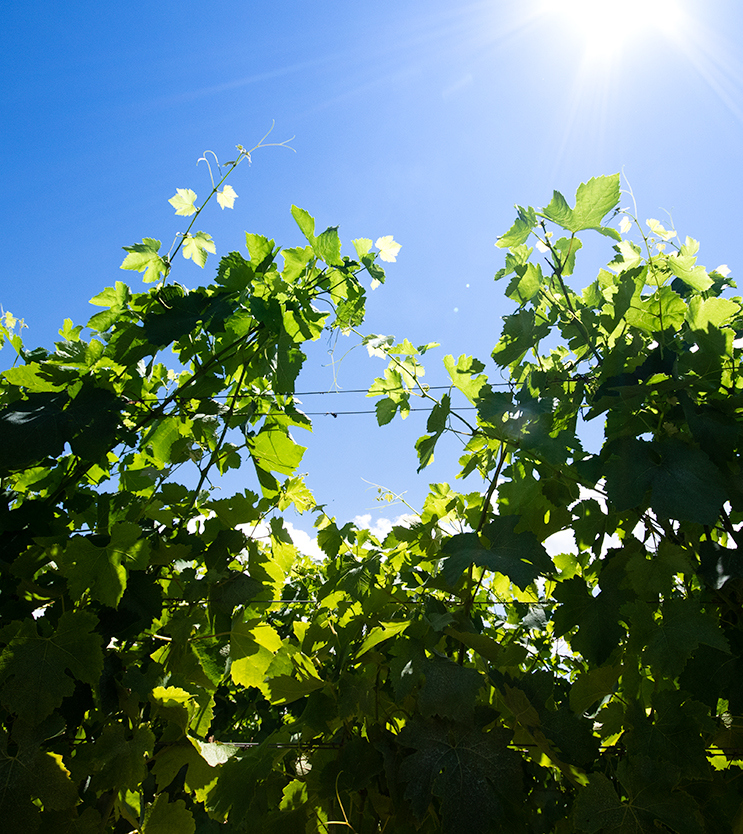
The amount of brightness and the resulting solar radiation index, which are determining factors for the vines’ photosynthetic activity, are ideal. The area’s latitude contributes on one side, while on the other, sunlight is intensified as it is reflected off the shimmering sea, falling at an angle that is optimal for the vineyards.
Annual precipitation is in the range of approximately 600 ml per year, well distributed over the months, more frequent during the vegetative phases and sporadic during maturation. Soils are quite deep therefore the vines’ roots are able to find underground water resources even during years that present drought conditions.

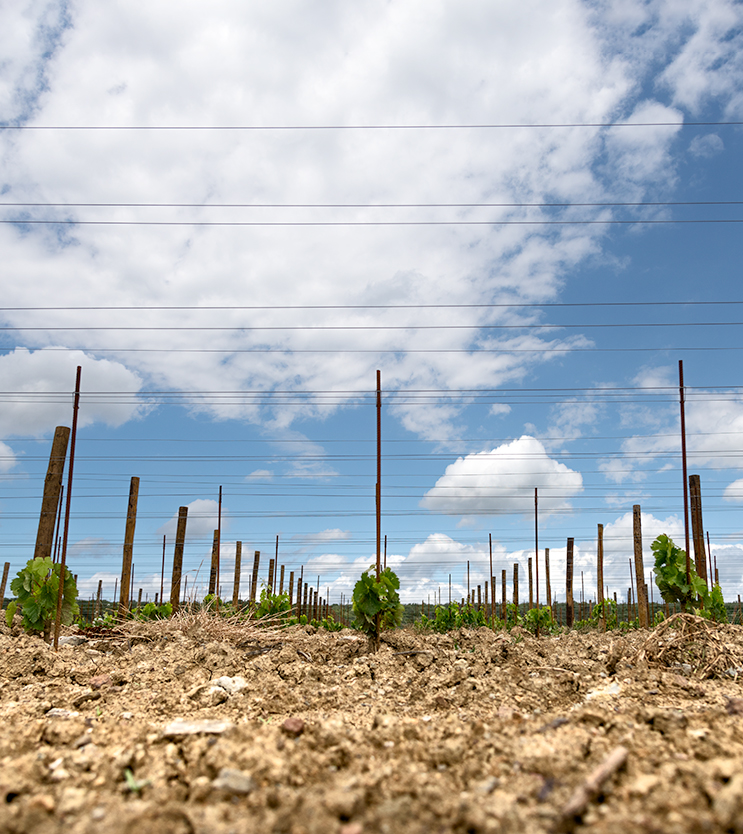
A unique Soil
The complexity and distinctive qualities of wines produced in Bolgheri are influenced by the great variety of soils.
Geologically, Bolgheri’s terroir has both marine and alluvial origins; marine influences are reflected in the soil from the retreat of the sea in past eras, and alluvial deposits have been transported to the valley over the course of time from the many streams that run through Bolgheri’s hillsides. An important zonation study was conducted by Professor Attilio Scienza in the mid-1990s, completed in 2006, to fully understand the complexity of Bolgheri’s soils. The study identified 27 different soil units that were difficult to determine by macro-area.
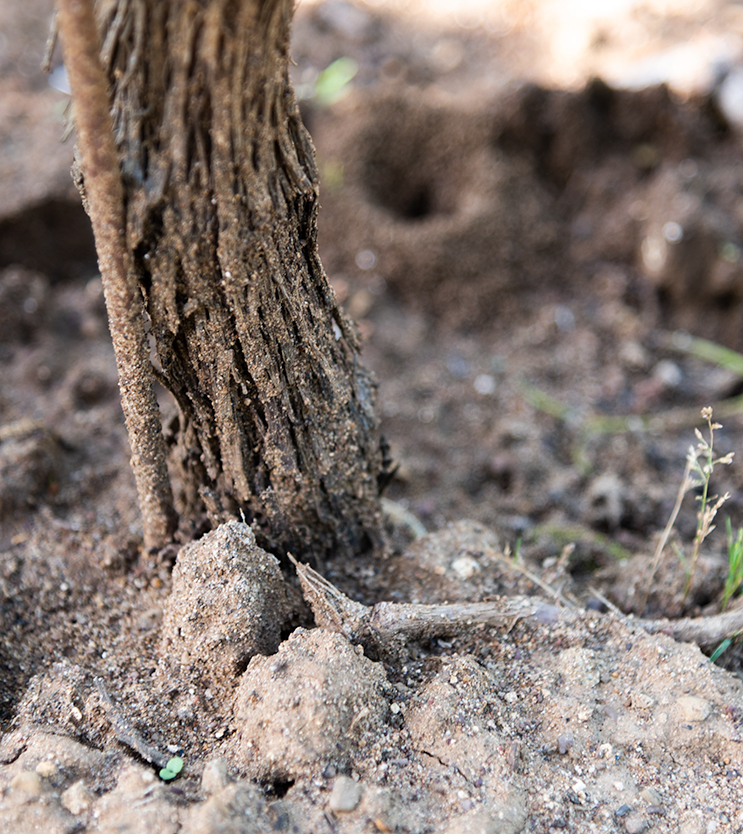
Many of these soil units appear in very small areas and this is the main reason there isn’t one prevailing grape variety in Bolgheri. Many different varieties have been planted to best express the unique characteristics of each individual soil unit. Generally speaking, most of the soils in Bolgheri are sandy clay loam, alkaline, deep, with a good percentage of very fine gravel, in which it’s possible to find fossil fragments such as small shells that are visible even on the surface, proof of the geological history of the territory.
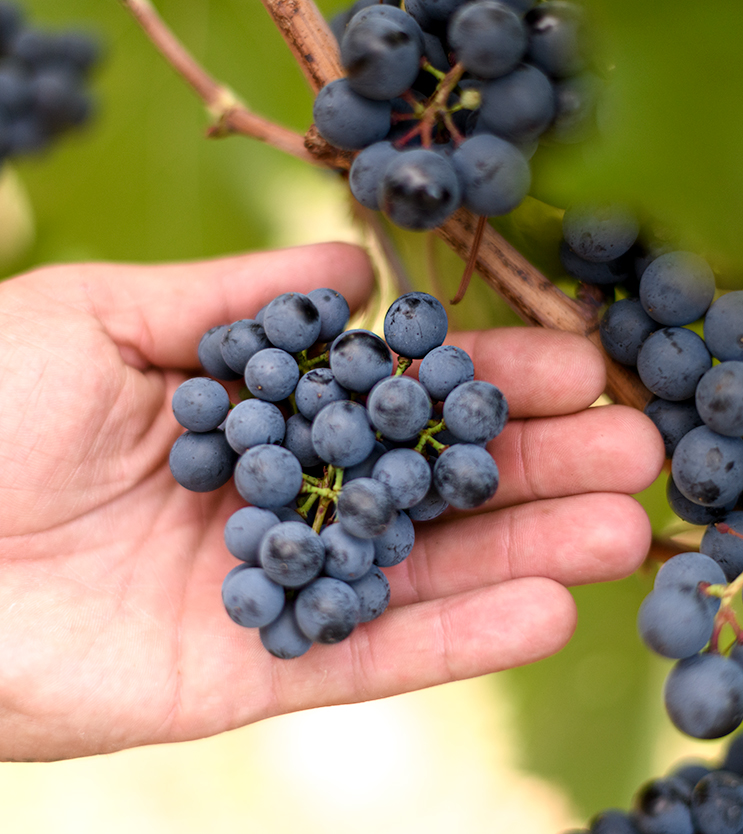
The People behind a Wine
When considering the concept of terroir, one of the factors that is often neglected, but is just as important as climate, geography and soil, is the people behind a wine and their interactions with the environment.
The impact of this relationship between nature and culture is where a great wine is made. These activities are not limited just to agronomic principles and cellar management. Bolgheri’s unique character, prosperity and success were gradually shaped over the years by its producers, vintners who have grown and learned through research and development and will continue to do so in the future in the pursuit of obtaining the finest results for both the wines and the territory. The spirit of sharing results, living in harmony, having mutual understanding and respect for each other and the unique environment that bonds producers together is the foundation of Bolgheri’s past, present and future achievements.
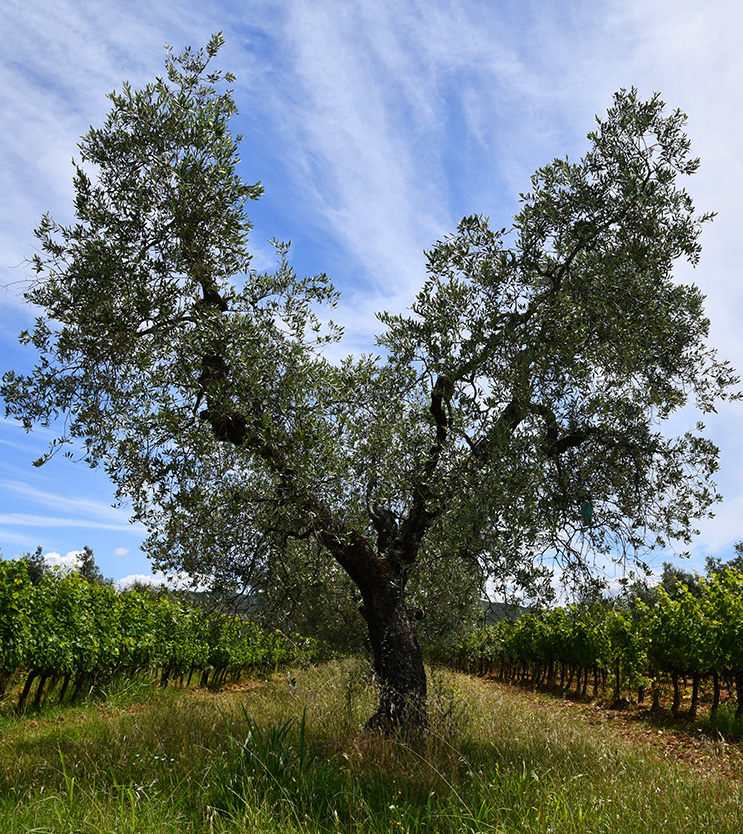
History
From the Etruscans to the 25 years of the Consortium: to discover the centuries-old history of this fascinating territory, click and read more on the dedicated page.
DISCOVER THE HISTORY OF BOLGHERI
